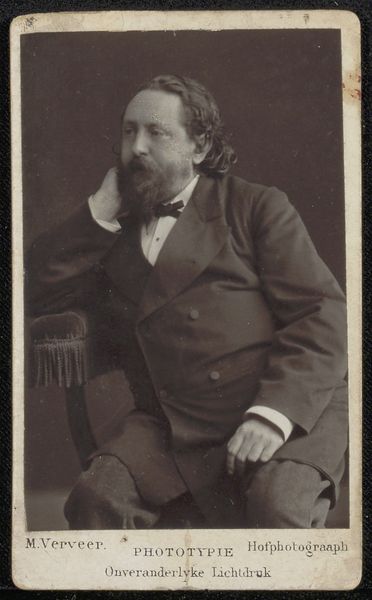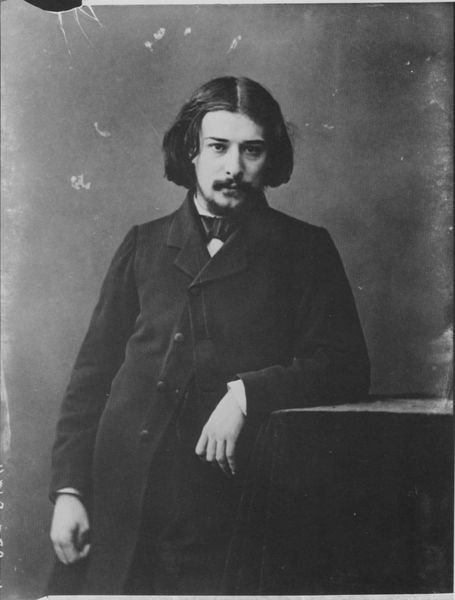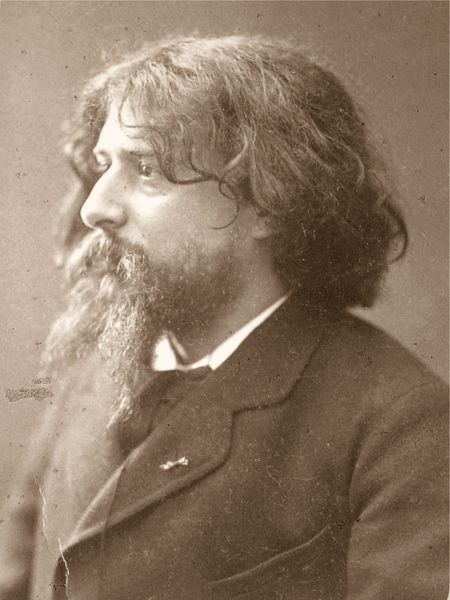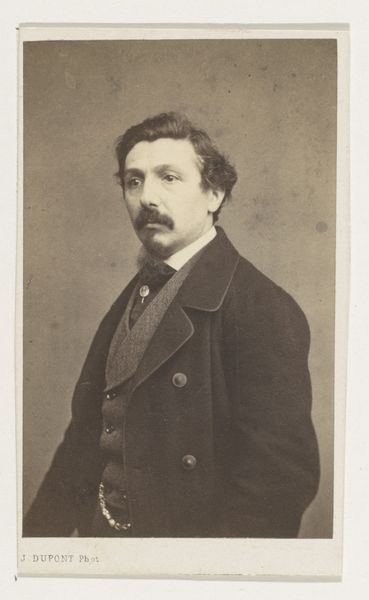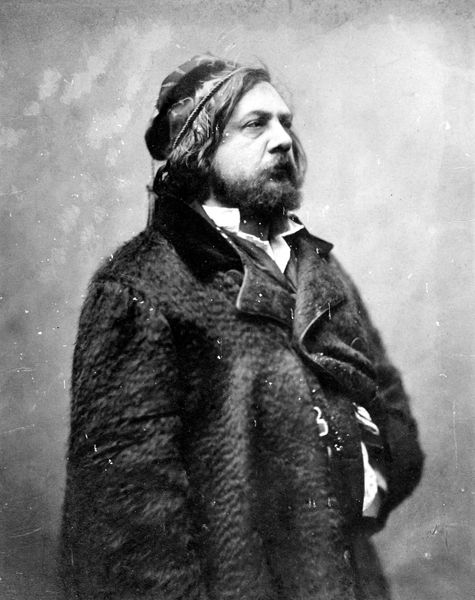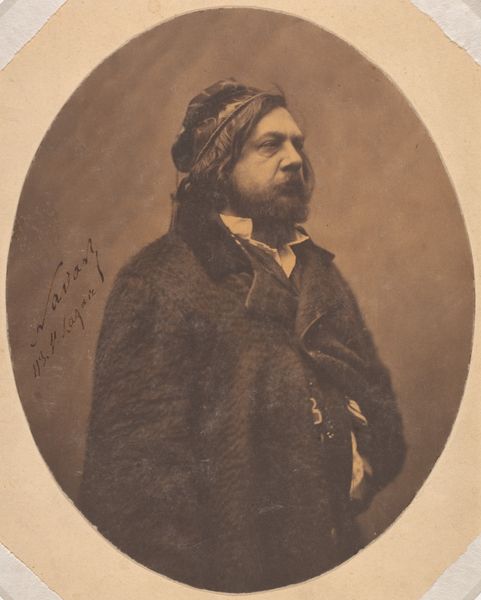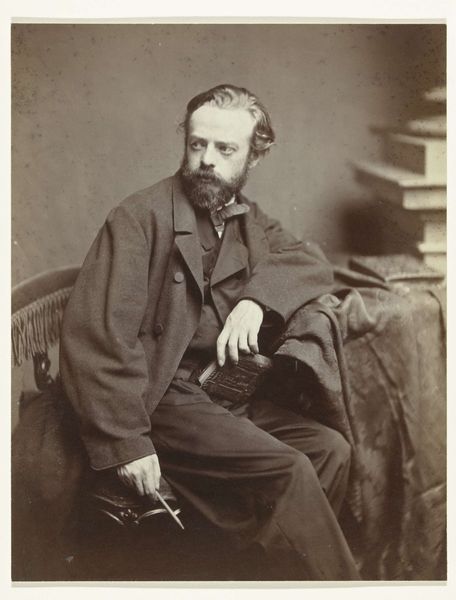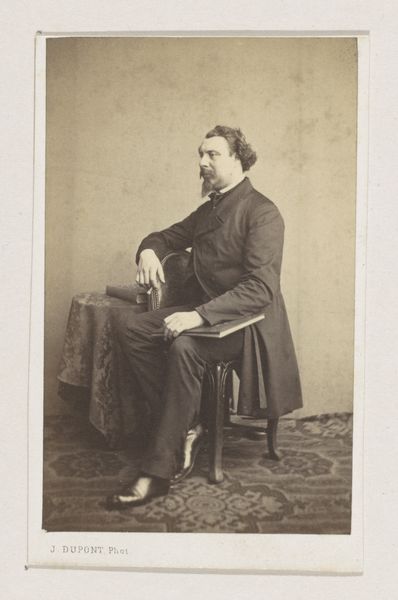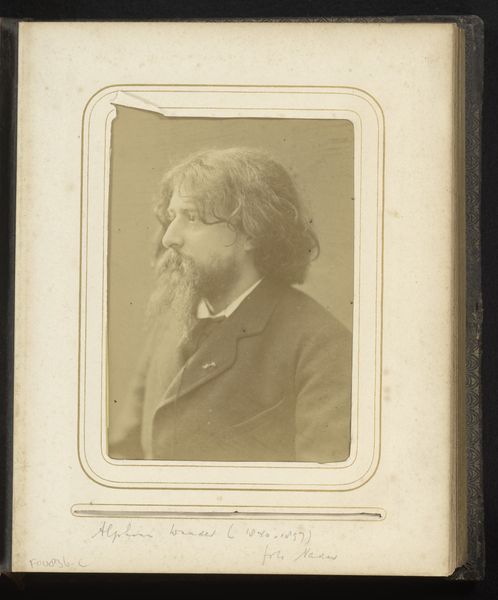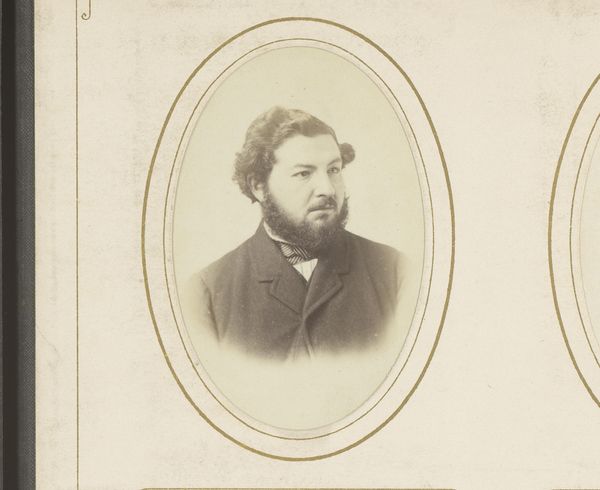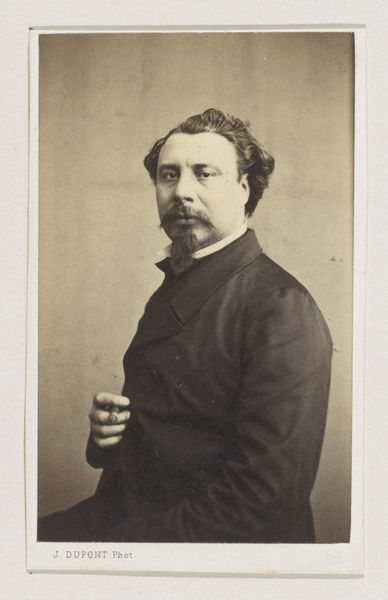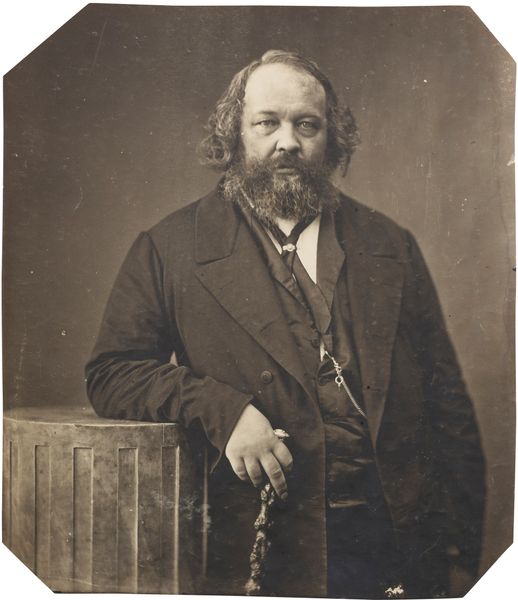
Copyright: Public domain
Curator: I'm immediately struck by the textures and layering apparent in this gelatin-silver print. There's the tweed of his suit, the rough surface of the ornate table... Editor: Indeed. Let's contextualize. This is Félix Nadar's portrait of Alphonse Daudet, created in 1891. It's fascinating when considering Daudet's legacy in late 19th-century French literature. The image provides an interesting point of intersection with issues of authorial identity and celebrity culture of the period. Curator: The silver gelatin process is also critical. Nadar wasn't just documenting Daudet; he was actively crafting an image, utilizing light, chemistry, and process to convey something specific. You can see where the light seems to illuminate him from within. Editor: Precisely, it connects with Romantic ideals regarding authorship and selfhood. It situates Daudet within a discourse on artistry as divine inspiration during a crucial period for the conception of the 'artist.' We are speaking about the cultural and political forces surrounding this portrayal. Think of the shifting gender dynamics and its implications for men in public life during the fin de siècle! Curator: I find myself fixated on Daudet's hands, almost caressing the edge of that bizarre little table with those little carved masks—the staging is important to how we are meant to perceive Daudet. How is Nadar suggesting an image about Daudet’s relation to classical ideals? Is it merely window dressing? Editor: That’s astute. Think of how the photograph flattens any labor connected with portraiture; here we only see Daudet, not Nadar's workers prepping materials, mixing chemicals, and developing. The finished image is marketed, bought, consumed – divorced from its mode of production. Curator: Thank you for sharing that context; the way you discuss these intersections has helped to shed new light on a relatively traditional portrait. Editor: It is essential that we delve beyond the mere image and discuss the structures and labor that went into the representation.
Comments
No comments
Be the first to comment and join the conversation on the ultimate creative platform.

